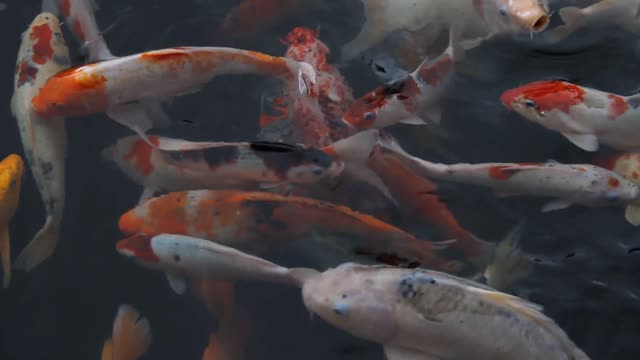Premium Only Content

Awesome Koi fish
Koi Heritage
Contrary to popular belief, the koi fish is thought to have originated in China. The fish were later used as a food source before the Japanese began breeding them for their aesthetic appeal in the mid-1800s.
Popularity Contest
In Japan, the most popular variety of koi is the Kohaku, a red and white koi. In the United States, the most popular are the Kohaku, the Taisho Sanke, and the Showa Sanke. The Taisho Sanka and the Showa Sanka are both red, white, and black.
Smarty Fish
Koi fish are very intellectual. Like a dog or a cat, they can be trained to eat out of your hand and sometimes even out of your mouth. Koi fish are omnivores and are known to munch on pond plants.
Body Works
Koi fish can grow up to three feet long if raised in the ideal conditions. They can become sunburned if a pond is too shallow and has little shade. Koi fish don’t have teeth. Females are larger than males.
The Great Mate
In the mating process, koi fish eat their young, recently-hatched offspring called koi fry. Koi fish need to be removed from the fry during the mating session to preserve the fry.
If a breeder raises a highly sought after koi, it can sell for thousands of dollars. $250,000 is not unheard of for a prized koi fish.
Great-Great-Great-Great Grandpa Koi
The Kohaku is a white variety of koi with red patches and is the most popular in Japan.
A legendary koi named Hanako lived to be the oldest koi of all recorded history. Hanako was hatched in 1751 and lived to the ripe old age of 226, passing away in 1977. This famous Japanese koi lived through the Industrial, American, and French Revolutions, saw the formation of the United States, the invention of electricity and the automobile, survived World War I and II, and even lived into the Vietnam War! That’s one long life span! However, most koi live 30-40 years.
Showing Their Age
While Hanako may have lived for 226 years, the koi’s age was not visible to the naked eye. Microscopic growth marks cover a koi fish’s scales like that of the rings on a tree. These can show patterns of rapid growth or shortage of food.
Representations
Koi fish symbolize many virtues in Asian cultures. They are recognized as symbols of perseverance and endurance, as well as strength and individualism.
Koi are a very intellectual fish and can be trained to feed from an owner's hand.
A Rainbow of Ideals
Because koi fish can develop such an array of colors, it comes as no surprise that each hue has developed a connotation. Gold koi fish represent wealth and prosperity. Metallic koi symbolize success in business. A blue koi is thought to bring serenity. Asagi koi of blue, red, and grey colorings symbolize positivity. Black koi are thought to hold a patriarchal symbolism, with red belonging to the mother, blue to the son, and pink to the daughter.
Do you have any fun koi fish facts to share with fellow koi connoisseurs? Post a comment or share them via the contact form!
-
 1:02
1:02
MavicMedic
4 years agoJelly Fish are awesome
14 -
 9:35
9:35
Steenfott Aquatics
4 years agoAWESOME Fish Ideas for 10 Gallon Aquariums
20 -
 14:16
14:16
americatoday
4 years agoAwesome Cooking Fish and Rice Soup Delicious Cook Fish Recipes
24 -
 1:07
1:07
voeun
4 years agoAwesome rabbits eating
20 -
 LIVE
LIVE
Badlands Media
8 hours agoDevolution Power Hour Ep. 356
7,093 watching -
 LIVE
LIVE
Barry Cunningham
6 hours agoPRESIDENTIAL BEATDOWN UPDATE! | BIDEN TREASON NEWS | DEMS AND MEDIA IN DOOM SPIRAL!
15,076 watching -
 LIVE
LIVE
TimcastIRL
2 hours agoTrump SLAMS South African Pres. For DENYING "White Genocide," Corp Press CRIES AMBUSH | Timcast IRL
9,648 watching -
 LIVE
LIVE
MissesMaam
2 hours ago2ND YEAR ON RUMBLE - LIVE HIGHLIGHT MONTAGE PREMIER (18+)💚✨
860 watching -
 35:58
35:58
Friday Beers
3 hours ago $0.58 earnedOur First Golf Challenge: Hit Under 40 or Lose $5,000
20.9K -
 LIVE
LIVE
Badlands Media
19 hours agoAltered State S3 Ep. 29
2,925 watching